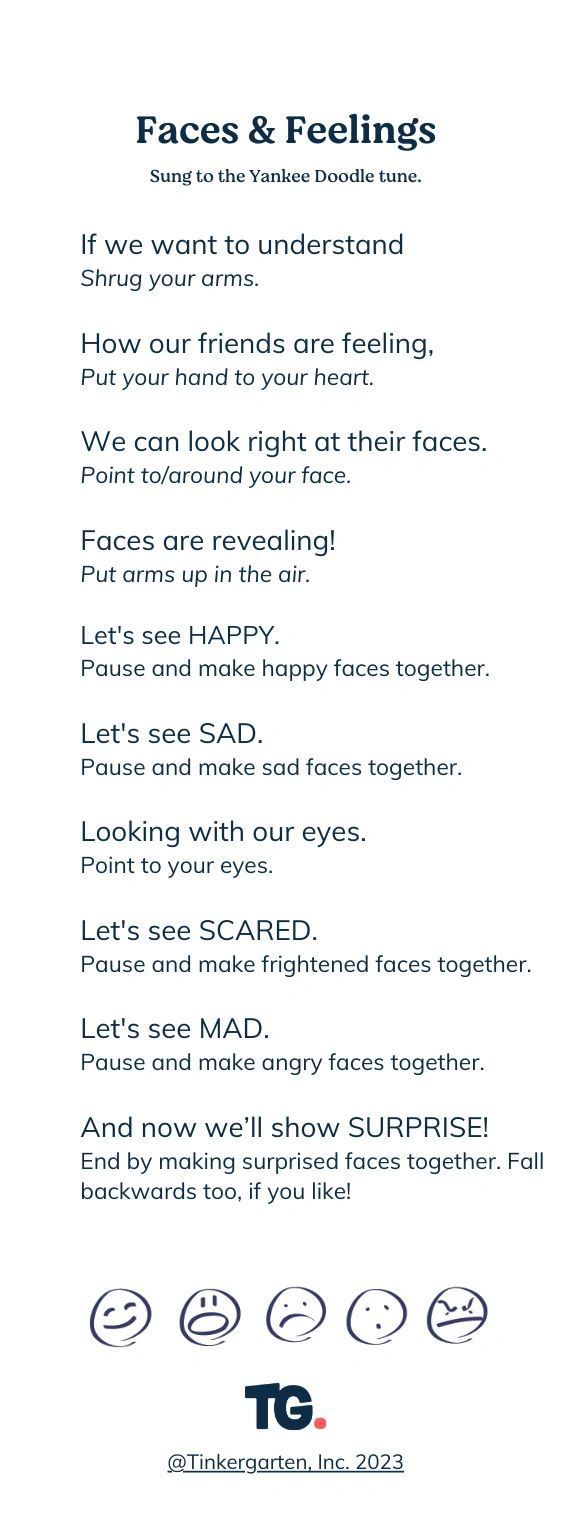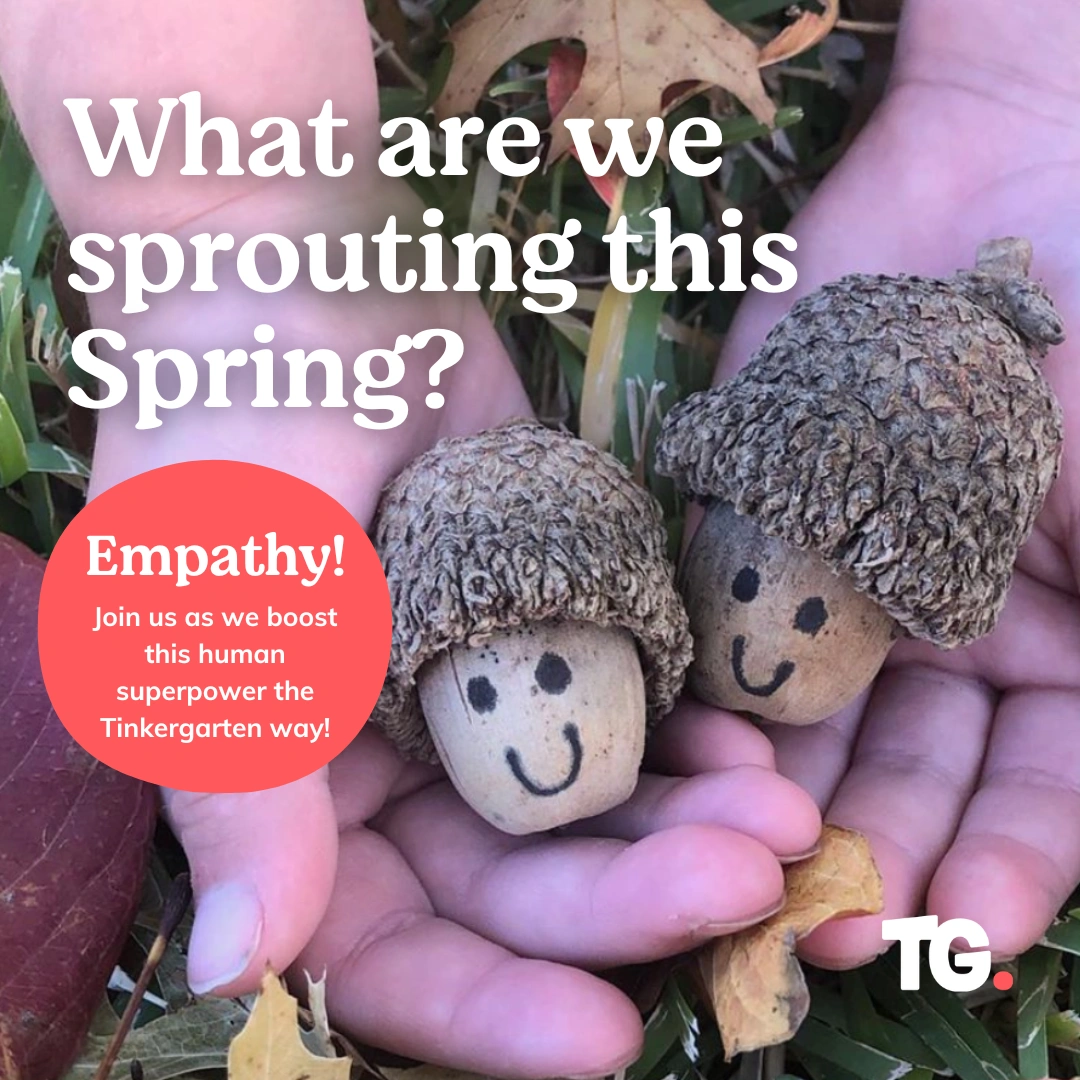Empathy is more than just an elegant and important skill—it’s also our human superpower.
Developing empathy in children is one of our most important jobs as parents and caregivers. There are three main kinds of empathy: emotional, cognitive and compassionate. According to empathy experts Daniel Goleman and Paul Ekman, we use these three in concert to realize empathy’s full potential.
Emotional empathy may be the most familiar to us. It’s the ability to sense the emotions that another person is feeling—like when you tear up at a sad movie or feel elated for the player who just scored the winning goal.
Early childhood is the perfect time to support emotional empathy: This processing of emotions plays out in the limbic system, a part of the brain that develops early in life. We can cultivate this natural ability in our kids in simple ways every day.
Here are just a few ways to help children as they’re developing empathy:
1. Focus on all of emotions
Rather than feeling daunted by the massive list of nuanced feelings we experience, focus on helping kids learn the six basic emotions first: Anger, Disgust, Fear, Happiness, Sadness and Surprise. These are experienced by people all over the world, say experts like Paul Ekman.
We can use language to provide a mirror to kids and help them tune into how they are feeling. This helps kids develop emotional awareness—something they need in order to become aware of emotions in others. To support emotional awareness, acknowledge and validate children's emotions—even the big ones. Help kids name their emotions by asking them questions like, “What are you feeling?” “Are you feeling sad?” Fred Rogers suggested narrating to them what you are seeing, saying things like, “I see you seem angry. Are you feeling angry inside too?” Wonder with kids what, in particular, is causing their emotional response. For example, “Are you feeling afraid of that dog?” or “Are you sad that mommy has to say goodbye for a little while?”
We can also model emotional awareness ourselves and share how we are feeling and why. It's important to model the full range of emotions to show kids more than just the “positive” emotions. When we do, kids realize that the full range is available to them. For example, if you get mad, you can talk through that moment with them and share that you were feeling a bit angry about whatever it was.
In fact, it’s great for kids to see that we feel strong emotions of all kinds, can talk about it and can find productive ways of processing and working with them. When we are vulnerable now and again we normalize emotions like sadness or fear and show kids that they are part of life and that we work through them. We also show kids that we can open ourselves up to other people which makes close connection even more possible.
2. Show kids how to notice other people’s feelings
Wonder about other people’s feelings out loud with kids. As children grow, they become more and more aware of other people and their emotions. If your child is too young to dialog about this, narrate to them about what you are noticing about other people’s emotions. Kids are able to receive language and understand much more than they are able to express on their own.
Read books and tell stories in which characters feel and express basic emotions. Stop along the way to look at the images and consider the story, wondering together, “How is the character feeling? Why do you think that character is feeling that way? How can you tell?”
When you see someone in real life who is feeling an emotion, use that as an opportunity to wonder, “How do you think grandma is feeling? What do you think made her feel that way?”
It's natural to worry about when kids should be on the hook to say, "I'm sorry," but we should be careful not to push so fast that we miss chances to teach empathy. If your child does something that makes someone else experience sadness, fear or anger, consider holding back the urge to push kids to say, "I'm sorry." First, try to build in time for your child to notice what they other person is feeling and make the connection between what happened and that emotion. That lesson in emotional empathy is powerful, and we often skip kids right over it in our rush to smooth it over with a "sorry."
3. Help kids learn to read faces.
Humans all over the world make the same basic facial expressions in response to the six basic emotions, according to decades of research. Learning to read other people’s faces is a skill that helps kids identify and sense their emotions.
As you read books, pay particular attention to the faces of characters. Wonder whether they are wearing a “happy face,” a “sad face,” etc. Note the shape of their mouths, eyes, and eyebrows. Children for whom emotional awareness and nuanced social communication is challenging will benefit even more from learning to read faces. Because humans tend to make predictable facial expressions for a given emotion, kids can learn and apply the specific cues, taking much of the guesswork out of reading other people’s emotional state.
When you pretend-play together, pretend to have different emotions. Make it a point to use facial expressions as you play.
Once children’s drawings include details on the faces, note the way faces are drawn. Wonder with children about the choices they make as they draw faces in addition to talking about how the person or animal they drew is feeling. (Watch here for how to make tree faces, another fun, empathy-boosting nature activity to try!).
4. Sing Songs About Feelings.
Active songs can naturally engage kids in learning about feelings and the body. Teach kids about emotions and faces by singing and acting out a simple song like the one below (featured in this series of Tinkergarten Anywhere). Note: Even though the lyrics focus on looking at faces, it's good to mention that humans can use eyes and hands to observe faces.
Take Tinkergarten THIS Spring, 2023!
Join us each NOW for Spring 2023/Empathy series. You can Tinkergarten in two ways:
- Subscribe to Tinkergarten Anywhere to get a new video lesson and resources to support play at home each week.
- Find a Local Teacher who is offering live Tinkergarten programs in your area.
Other Ways to Get Started
We have the tools to understand and feel the feelings of others. We just need to learn to activate them. Here are some ways to start:
- Learn more about why Now is the Perfect Time to Boost Kids Empathy.
- Try simple, powerful ways to promote kids' cognitive empathy (the ability to think what someone else is thinking).
- Choose one of these books that help teach kids empathy for your next story time.
- Discover fun, outdoor empathy-building activities like Spreading Smiles and Feeding our Feathered Friends.
- Empathy is, at its core, a group effort, so join our #OutdoorsAll4 Facebook group to share more empathy-boosting ideas that work for you and yours.
Bit by bit, experience by experience, our children's empathy can grow stronger and more refined–what a gift to them and the world. Imagine the impact if we all do that together!



